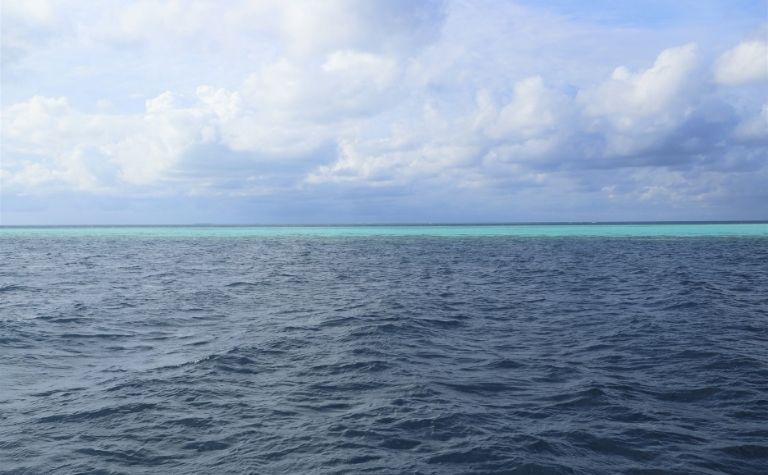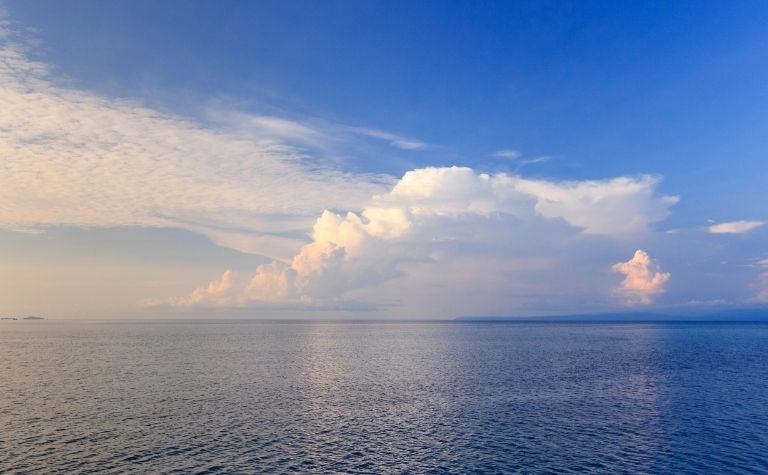The creation account in the first chapter of Genesis is one of the most beautiful and powerful passages in the Bible. It explains to readers how God created the world, including what he spoke into being and when. Each day of the creation account is important. The second day of the creation account is important unto itself and in relation to the fifth day.
God created the expanse, also called the firmament, on the second day of creation. It refers to all the space above the surface of the earth. The expanse separated the waters below the space from the waters above it. Bible scholars debate the nature of the waters above the space, some arguing for a water canopy.
What’s the significance of the expanse for people? What does separating “waters from waters” mean in Genesis 1:6? What is a water canopy? How does the second day of creation uniquely correspond to the fifth day? Keep reading to learn the answers to these questions and many others.
Also see Who Wrote Genesis? to learn more.

Let There Be An Expanse: What God Created On Day Two
The second verse of the Bible explains that before the first day of creation, God’s Spirit hovered over the unfashioned waters of the earth. “The earth was without form and void, and darkness was over the face of the deep. And the Spirit of God was hovering over the face of the waters” (Gen. 1:2, ESV).
On the first day, God created light, which penetrated the blackness that enveloped the world (v. 3-5). Yet it wasn’t until the second day of creation that God acted upon the “face of the deep” or the “face of the waters,” which most Genesis scholars believe are parallel descriptions.
God spoke the firmament into existence
Just as God spoke light into being on the first day, saying, “let there be light” (v. 3), he spoke space into existence between the waters above and below on the second day, saying, “Let there be an expanse in the midst of the waters, and let it separate the waters from the waters” (v. 6).
Since God’s word accomplishes its purposes (cf. Isa. 55:11), an expanse appeared and separated the waters. “And God made the expanse and separated the waters that were under the expanse from the waters that were above the expanse. And it was so. And God called the expanse Heaven. And there was evening and there was morning, the second day” (v. 7-8).
The Hebrew word raqia (רָקִ֖יעַ) refers to an extended surface or expanse. As the table below shows, Bible translations render the word differently.
| Translation | Genesis 1:6 |
|---|---|
| ESV | And God said, “Let there be an expanse in the midst of the waters, and let it separate the waters from the waters.” (Also NASB and CSB) |
| KJV | And God said, Let there be a firmament in the midst of the waters, and let it divide the waters from the waters. (Also NKJV) |
| NIV | And God said, “Let there be a vault between the waters to separate water from water.” |
| NLT | Then God said, “Let there be a space between the waters, to separate the waters of the heavens from the waters of the earth.” |
| NRSV | And God said, “Let there be a dome in the midst of the waters, and let it separate the waters from the waters.” |
The word “firmament” isn’t a common English word in the twenty-first century, yet the KJV and NKJV translations help keep it in the vocabulary of many Bible readers. The simple definition of the word is “the vault or arch of the sky” (Merriam-Webster’s Dictionary).
Also see Where Is Noah’s Ark? to learn more.

What does separating waters from waters mean?
Scholars agree that the “waters below” refer to the seas that cover the earth. However, there are differences of opinion about what the “waters above” mean.
Some English translations like the NLT add descriptions like “the waters of the heavens” and “the waters of the earth,” but the modifiers “heavens” and “earth” don’t appear in the Hebrew text of Genesis 1:6.
The expanse God created enabled people and some animals to breathe the air it contained. It also organized the “waters” into two places. First, God organized water on the surface of the earth. Second, he organized “waters” above the expanse.
Genesis scholars agree that the waters below the expanse are the surface waters of the earth, but there isn’t consensus about the nature of the waters above the earth.
Are the waters above a reference to clouds?
Some scholars believe that the waters above the expanse are clouds. Genesis scholar Kenneth Mathews explains, “In the Old Testament elsewhere there is evidence that the Hebrews understood that clouds produced rains and thus, from a phenomenological perspective, ‘water’ can be described as belonging to the upper atmosphere.” [1] Mathews supplies the following verses as support for his argument:
- Deuteronomy 28:12, “The Lord will open to you his good treasury, the heavens, to give the rain to your land in its season and to bless all the work of your hands. And you shall lend to many nations, but you shall not borrow.”
- Judges 5:4, “Lord, when you went out from Seir, when you marched from the region of Edom, the earth trembled and the heavens dropped, yes, the clouds dropped water.”
- Ecclesiastes 11:3, “If the clouds are full of rain, they empty themselves on the earth, and if a tree falls to the south or to the north, in the place where the tree falls, there it will lie.”
Are the waters above a reference to a canopy?
Other scholars argue that the text implies a water or vapor canopy. Henry Morris argues for this interpretation of Genesis 1:6. He writes that other ancient people groups mention a water canopy. [2]
Some people who believe that the earth had a canopy argue that it consisted of rings, perhaps like those surrounding Saturn. Others suggest it was probably a shell of water circling the earth. Yet another theory is that it was a dense layer of clouds.
However, Henry thinks that a vapor canopy is the best explanation. “A vapor canopy seems more likely, however, both because of the inferred manner of its formation and because it would have to be transparent in order for the heavenly bodies to ‘give light upon the earth’ and to ‘be for signs, and for seasons, and for days, and years (Genesis 1:14, 15).'”
Henry continues: “Water vapor, even in vast amounts, is invisible, whereas clouds, fog, and so forth, are composed of minute droplets of liquid water and are therefore opaque.” [2]
Those who believe in the water or vapor canopy theory often argue that its collapse contributed to the global flood that occurred in Noah’s day (cf. Gen. 6-9).
They also contend that 2 Peter 3:5-6 describe this event: “For they deliberately overlook this fact, that the heavens existed long ago, and the earth was formed out of water and through water by the word of God, and that by means of these the world that then existed as deluged with water and perished.”
Also see Which Son of Noah Did Jesus Come From? to learn more.

The second day was preparation for the fifth day
The creation account also exhibits a clear structure of preparation and completion. In this way, the second day uniquely corresponds to the fifth day. The expanse God created looked ahead to when the birds would fill it and sea creatures would fill the waters below it.
| Preparation | Completion |
|---|---|
| “without form” (Gen. 1:2) to form | “void” (Gen. 1:2) to fullness |
| Day 1: God created light, separating it from darkness (v. 3-5) | Day 4: God placed luminaries in the heavens (v. 14-19) |
| Day 2: God created the expanse, separating the waters above it from the waters below it (v. 6-8) | Day 5: God placed fish and birds in the sky and seas (v. 20-23) |
| Day 3: God created land and vegetation, separating the waters below the expanse into seas (v. 9-13) | Day 6: God placed people and animals on the land (v. 24-31) |
The Creation Account: Table of Contents
Readers are welcome to read follow the links below to learn more about the seven-day creation account in Genesis. For convenience, this table of contents is found at the conclusion of each article in the series.
| 7 Days of Creation |
|---|
| God created light on day one |
| God created the sea and sky on day two (see above) |
| God created land and vegetation on day three |
| God created the sun and moon on day four |
| God created birds and fish on day five |
| God created animals and people on day six |
| God rested on day seven |
Also see How Long Was Noah In the Ark? to learn more.
References:
[1] Genesis 1:11-26 by Kenneth Mathews. p. 150.
[2] The Genesis Record by Henry Morris. p. 59.
Related Questions
The Garden of Eden plays an important role in the early chapters of Genesis. God created Adam, planted the garden, and placed the first man in it (Gen. 2:8). God later created Eve and placed her in...
A serpent plays an important role in Genesis, the first book of the Bible, and in Revelation, the last book. Scripture also mentions them in other places in the Old and New Testaments that are...
